HighFleet: The False Prophet Simulator - Pt. 2
On the Antichrist, Orientalism, and the Soviet-Afghan War
In Part 1, we looked at 2021’s HighFleet, the video game that puts you in command of a fleet of nuclear-armed airships on a post-apocalyptic desert planet. Tl;dr, it’s beautiful, intricate and (eventually) highly playable, though it’s harder to learn than it needs to be.
Here, we will be analysing HighFleet’s story, its narrative design, and the historical and literary context it draws on.
More on video games can be found here and here.
HighFleet and the Soviet-Afghan War
HighFleet is by no means a visual novel, yet as is all too evident from the quality of its presentation, it is a game that holds itself to high aesthetic standards, and this extends to the narrative as well. HighFleet’s storytelling is all the more effective because, rather than relying on lengthy passive dialogues, it is conveyed so interactively, involving the player directly. By this, I mean that the game’s in-built incentive structure leads the player to identify with Duke Sayadi, to share his interests and priorities, and therefore to commit the war crimes he would commit make the choices that he would make.
Before going further, it’s worth making a detour into the Soviet-Afghan War, which Koshutin1 cited as a touchstone for HighFleet. This gruesome conflict isn’t really part of the average English-speaker’s mental world, though it probably should be, a) because it was a catalyst for the fall of the Soviet Union, and b) because it helped launch the perpetual War on Terror, after alumni of the Soviet-Afghan War2 baited yet another superpower into yet another gruesome war in Afghanistan, a country already in ruins.
The events leading to the Soviet invasion began in the late 70s, after a Soviet-backed communist coup, which quickly escalated to state terror and mass murder of dissidents. The response was a popular insurgency with Islam as its focal point, which attracted many foreign fighters, who saw themselves as fighting a holy war against the atheism of the Soviet Union. These militants, called the Muhjahideen, were backed by US and British intelligence, and were armed and trained via allied Pakistan.3 The Red Army arrived in December 1979 at the behest of the communist regime, and did not leave until February 1989.
The war is in many ways comparable to the Vietnam War, both in terms of how it was fought and how it is remembered. As in Vietnam, this was a lopsided guerilla war, with poorly armed insurgents against a modern superpower. As in Vietnam, the invading force resorted to brutal measures against the population:4 the USSR killed somewhere between one million and two million Afghan civilians, many deliberately and systematically, and millions more were wounded and displaced. As in Vietnam, the invading army also suffered horribly from attrition, while the war was increasingly seen as illegitimate at home and even by many of the soldiers themselves. The Afghan War is widely believed to have hastened the fall of the Soviet Union, undermining support for the regime, while also constituting a major drain on the USSR’s finite resources.

HighFleet’s Gathering War is by no means a 1/1 re-enaction of the Soviet-Afghan War. For one thing, both sides are similar in terms of resources, and both even have nuclear weapons; in fact, the Gerati forces might even have the upper hand against the Romanis, having successfully invaded imperial territory and staged a nuclear attack on the capital. For another, the imperial party (represented by the player) is able to cultivate support among the population, whereas the Soviets were more or less at war with the population itself.
However, the spectre of the Afghan war helps to set the murky moral tone of the game from the outset: the image of a modern, Russian-inflected military invading a fictional Central Asia is comparable to video game representations of proxy-Americans invading a proxy-Vietnam in terms of the tone it sets.5 This sketchy aspect of the protagonist is further emphasised by the many other associations the game invokes: with their antiquated uniforms, double-headed eagle emblem, and absolute monarchy, the Romanis (whose name is reminiscent of Romanov) are more evocative of Tsarist Russia than the USSR. While the Tsars have been whitewashed to an extent in Russia itself,6 HighFleet was made for an international market, and seems to be well-aware that, as far as most people around the world are concerned, the Tsarist era is synonymous with serfdom, proto-gulags,7 pogroms, and brutal colonial enterprises.8
As such, there’s a pretty clear sense that Duke Sayadi isn’t exactly a force for good.
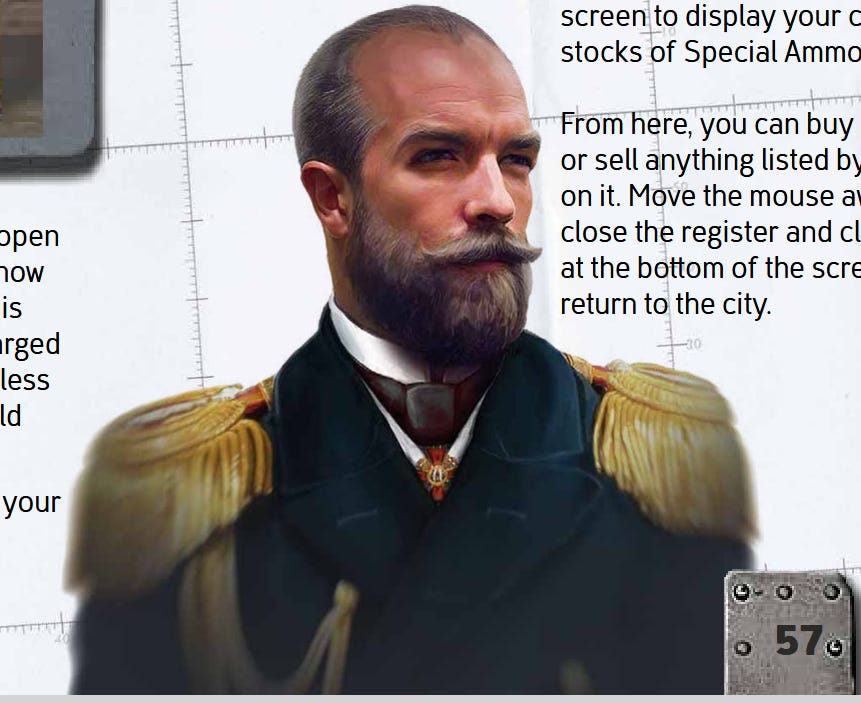
The Sayadi-Lawrence-Atreides Spectrum
Moreover, the allusions to Dune and Lawrence of Arabia, which are very apparent if you’re familiar, link Duke Sayadi9 to the protagonists of these stories, both of whom are imperialists to varying extents, and neither of whom are necessarily ‘good’ guys. David Lean’s version of Lawrence is in many ways a sympathetic figure, but he’s also histrionic, heedless, and self-destructive, and a naive tool of British colonialism. Paul Atreides, meanwhile, sets out to overthrow a tyrant but is doomed to become a tyrant himself. With a pedigree full of Romanovs, Soviets, T.E. Lawrences, and Muad’Dibs, Duke Sayadi was never going to be a totally upstanding guy.
How does Sayadi’s sketchy streak manifest, you ask? Well, he’s a pathological liar, for a start, or at least he is when I play as him. Strictly speaking, you can play as a truthful Duke Sayadi, but this is strongly discouraged and dis-incentivised by the game’s own systems, particularly the dialogue system used to persuade Tarkhans to join Sayadi’s forces. It’s very apparent that the goal isn’t to honestly convince them of anything, but rather to ferret out their ideals and deceive them into taking you for a friend. In other words, the aim of the exercise is not telling the truth, but telling people what they want to hear.
The other thing that almost every version of Duke Sayadi will have in common is having a minimal ‘kindness’ stat: again, this derives from the game’s incentive structures, which strongly discourage you from being kind and merciful. This is implemented through the ‘rescue’ system: after battles, the player must choose what to prioritise while scavenging the battlefield, and the rescue of survivors is almost always going to be at the very bottom of your priority list, because new recruits are often redundant, whereas salvaged weapons and equipment are a vital source of much-needed funds, and valuables that can be gifted to Tarkhans are just as precious.
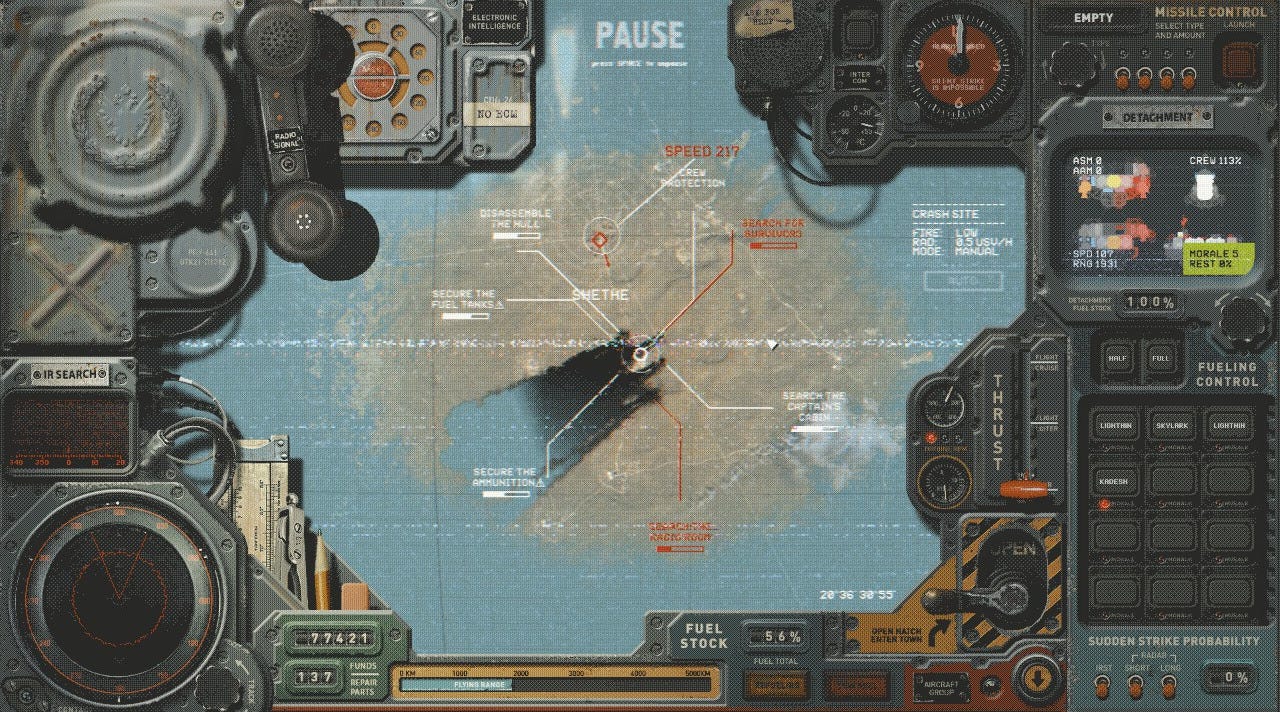
Moreover, depending on how desperate you are, you’re often going to find yourself sacrificing your own crewmen to salvage valuables, which comes at the cost of both morale and the kindness stat. This becomes a self-reinforcing system: if your kindness stat is low, your troops will be affected by your example, and will therefore approve of harsher choices in special events that trigger in cities, which means gains in terms of morale and Tarkhan support. In other words, the game is set up to reward being a bastard: indeed, crew morale will even benefit if you allow them to sell captives into slavery, making this the expedient option, with few downsides from the Duke’s point of view.
All of this plays into the core storyline, which likewise strongly encourages ruthlessness and dishonesty. As heir to the most illustrious House in Elaat, Duke Sayadi has inherited the secret knowledge of how to read pre-Catastrophe languages, including religious scriptures. These scriptures, called qodas, are kept as heirlooms by elite families in Gerat, several of whom are represented among Sayadi’s Tarkhans. As the story progresses, various parties will approach Sayadi and offer him qodas to translate.
What emerges is a prophecy of a hero from humble origins, who is said to be disfigured, gentle-natured, and ‘like unto a lamb.’ The player can translate the prophecy faithfully, but if Sayadi does so, he will be strongly penalised by losses of Tarkhan approval, fleet morale, and popular support. It is far more practical to do as Prince Fazil advises, and present a narrative of a warlike, elite prophet who is ‘like unto a lion’ and ‘born in the house of a king.’ The latter version plays well in the war-torn and feudal environment of Gerat, and is more than acceptable to Sayadi’s aristocratic Tarkhan supporters, whose position would be threatened by an alternative narrative.
By leaning into this prophecy and putting himself at the centre of it, Sayadi can reap great material benefits, shore up the morale of his fleet in times of uncertainty, and even convince the rebel Governor to join his cause, along with a powerful warship second only to Sayadi’s own flagship. As such, being a liar, an imposter, and a false prophet is very much the meta way to play HighFleet, and will most likely be treated as the canon path in the sequel.10
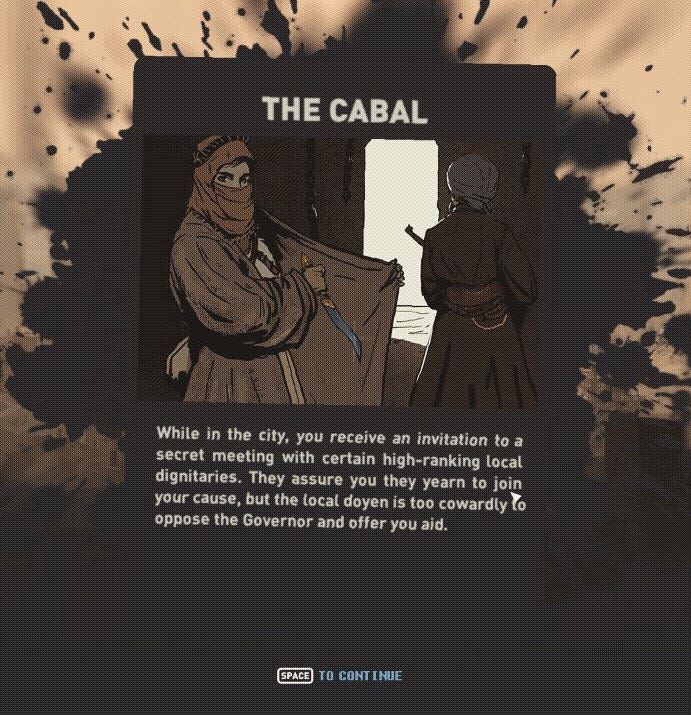
The weight of Sayadi’s imposture is further drawn out by the fact that the real subject of the prophecy very likely appears in the game, in the person of a mysterious masked Elaim encountered early in the narrative. The fact that he carries a unique (presumably healing) ointment implies that he is disfigured under the mask, which would tie him to the prophecy.11 Sayadi’s false prophet status is even alluded to by the game’s tagline, ‘Deus in Nobis,’ which means something like ‘God in Us.’
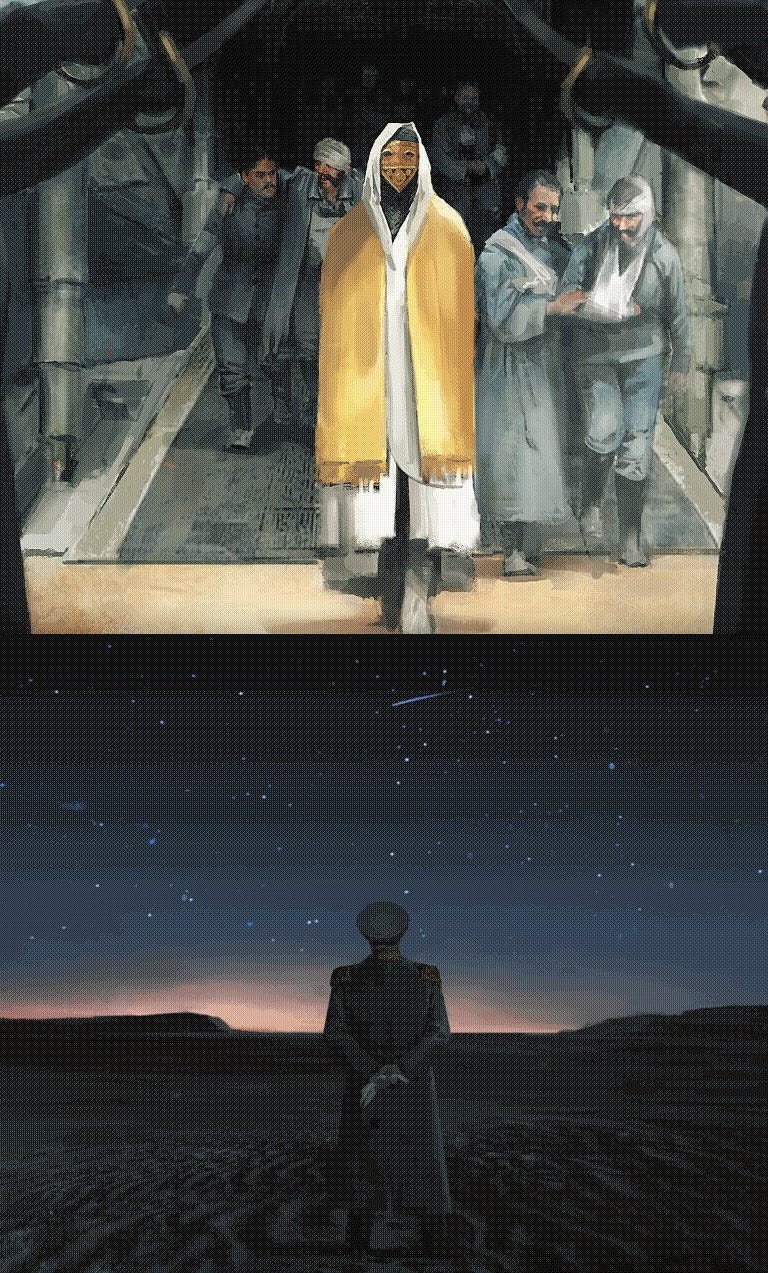
Sayadi and the Antichrist
Through the qoda story, Sayadi seems to be linked to the Biblical narrative of the Antichrist, a silver-tongued imposter who poses as the Messiah during the end times: Sayadi’s speeches invoke popular myths of the end of the world,12 and he claims that he will ‘gather all of the peoples in the world’ in Khiva’s nuclear bunker (under his rule…). Meanwhile, the real prophet is said to be a self-sacrificing font of forgiveness who will redeem mankind, linking him clearly to Christ. Sayadi, of course, can twist this message to suit the vengeful agenda of Alsahir, one of his Tarkhans, by qualifying that only the ‘deserving’ shall be forgiven.
In short, Duke Sayadi’s attitude to Gerat is distinctly similar to Napoleon’s attitude to Egypt, which dovetails neatly into the next and final section:
I saw the way to achieve all my dreams. . . . I would found a religion, I saw myself marching on the way to Asia, mounted on an elephant, a turban on my head, and in my hand a new Koran that I would have composed to suit my needs. In my enterprises I would have combined the experiences of the two worlds, exploiting the realm of all history for my own profit.
HighFleet and Orientalism
Before concluding, I want to include a few thoughts on HighFleet’s relationship with Orientalism, which is definite, but not straightforward. Philologist Edward Said, whose seminal 1978 book of the same name covered Orientalism in detail, defined the topic’s scope broadly. To give a rough outline, Orientalim was (/is) a European academic and cultural movement which reached its apex in the 19th century, and consisted both of scholarly study and imaginary representations of the East.13
As Said saw it, Orientalism depended on a self-reinforcing and arbitrary distinction between West and East, with the latter characterised as mysterious, attractive yet barbaric, unchanging,14 and in every way opposed to European culture and values. Academic study tended to be based on these assumptions and attitudes, and was at various times both a practical tool and a justification for imperial projects. In one of the book’s early chapters, Said gives a very illustrative example, citing a speech made by Lord Balfour in 1910 in defence of the British occupation of Egypt. Balfour appealed to Britain’s scholarly knowledge of Egypt’s history, insisting that it proved that Egyptians were fundamentally (and perhaps racially) incapable of self-rule: thus, a slanted kind of academic study was a tool for justifying a foregone political conclusion.15 Another characteristic of Orientalism, as defined by Said, is the tendency to characterise all ‘Orientals’ (whether they were Arabs, Indians, Persians, Jews, Muslims, Hindus, Chinese or Japanese) as essentially similar to one another, treating the whole of Asia as a monolith. The modern survival of this kind of dismissive thinking, and its usefulness as an imperial ideology, are obvious.
HighFleet is certainly tied to this Orientalism, in that its fictional Asia is (to an extent) characterised as exotic, mysterious, at once attractive and barbaric, and distinct from the more European Romani culture. It is also, of course, linked to sources that are connected to Orientalism, though post-colonial (and indeed anti-colonial) in character: Lawerence, as depicted in the film, is very literally an Orientalist, both in the academic sense16 and in the wider sense, in that he is attracted to Arab culture while at the same time repudiating it as ‘greedy, barbarous and cruel.’ As the story goes on, this initial outlook is turned on its head, as he becomes increasingly alienated from his British overseers and comes to truly identify with his Arab allies.
Lawrence is therefore something of a mixed bag in terms of its relationship with Orientalism: the overall tone of the story is anti-empire, yet it does to a great extent emphasise the alleged fundamental difference between Arabs and Europeans, with the former framed as ‘noble savages’ similar to Native Americans in Revisionist Westerns. Dune follows this pattern closely, condemning empire while at the same time exoticising the proxy-Arab Fremen and emphasising their difference, as well as their dangerous tendency to fanaticism, which is also present in Lawrence and indeed HighFleet.
However, it should be stressed that, while HighFleet does have these qualities, it differs from true Orientalism in some important and perhaps crucial ways. Whereas Orientalists of the 19th century and earlier tended to essentialise the difference between West and East, in HighFleet the lines between the Romani and Gerati cultures are very hazy and unclear. The Romani Emperor bears the distinctly Arabic/Persian name of Kerim Shah II, heads the Arabic-sounding Sayadi dynasty, and rules from the city of Shalem,17 a name of Hebrew origin.18 Similarly, Admiral Daud’s full name is Daud Sharif Rahmatovich, combining Arabic and Slavic components, and Pyotr Ignatovich Shahin’s family name is Persian. These mixed naming conventions for Romanis are employed very consistently, and serve to blur the distinction between Romani and Gerati cultures.
Far from the ‘all Orientals are the same’ trope, the Elaim peoples are also shown to be diverse and complex, as represented by the various Tarkhans, all of whom represent different parties and factions, and have varying attitudes and outlooks: some are religious, some are secular; some are self-serving, some are justice-oriented; some are friendly to Romanis, others are hostile. Indeed, it’s not always initially clear whether a Tarkhan is of Elaim or Romani nationality, and this ambiguity serves to challenge the idea of an essential difference between ‘East’ (the Elaims) and ‘West’ (the Romanis).
As such, it may be unfair to dismiss HighFleet as a product of old-school Orientalism. There are surely problematic elements,19 but overall, the tendency is not to elevate the West while denigrating the East, nor does HighFleet depict Gerat’s society as monolithic and ‘inscrutable’ in the way that real colonialists would.
Closing thoughts
To conclude, HighFleet is a really impressive beast in terms of design and aesthetics, while also excelling in its story and narrative design. HighFleet is fundamentally about the cold logic of empire, which rewards (indeed, demands) ruthlessness, treachery and deception, and punishes the Christ-like attributes of humility, compassion and mercy associated with the true prophet who Sayadi seeks to supplant. To this end, the game’s narrative draws on rich cultural sources, from popular post-colonial adventure tales to the Book of Revelation, and the results are impactful.
The game draws on the tradition of Orientalism in terms of its setting and aesthetics, but in the process challenges and undermines the standard tropes and assumptions of the colonial era, emphasising the similarity of Eastern and Western peoples as much as their difference. Crucially, the association drawn between the Romanis and discredited, disreputable imperial regimes, both Soviet and Tsarist, undermines from the outset the notion of any sincere, humane or coherent mission on the part of the Romanis, and this supplies context for the Gerati rebellion.
HighFleet excels because it understands that empire-building is not a nice activity, and because it makes full use of its interactive medium to tell a story in which the player - spontaneously, rationally and of their own free will - becomes a manipulative villain.
We’re not in Gerat to do nice things: we’re here to destroy a nascent Republic and restore an oppressive status quo.
(the lead developer)
(notably bin-Laden)
Which, incidentally, had committed a brutal genocide in Bangladesh in the early 70s. This was swept under the rug because Pakistan was a useful US ally, and because the victims were, in Nixon’s own words, ‘just a bunch of brown goddamn Moslems.’ The more things change, the more they stay the same.
US conduct in Vietnam wasn’t quite as systematically atrocious, though it wasn’t great either. Nick Turse’s book (Kill Anything That Moves, 2013) attracted some criticism, but it nevertheless shed light on the important role of ‘kill quotas’ in incentivising war crimes. ‘Kill quotas’ required that US patrols kill X number of insurgents, and those who failed to meet the quotas were penalised and sent on longer and more dangerous patrols. As such, troops had an incentive to kill civilians and report these as insurgent deaths to meet their quotas. (If this sounds like Blood Meridian, that’s probably not a coincidence.)
Turse also documented the widespread torture and sexual violence committed by US and South Vietnamese forces, police and security services, which also tends to be swept under the rug, with only a handful of prosecutions in high-profile cases such as the My Lai massacre.
Shoutout to Katana Zero, which dealt with ‘Nam.
Nicholas II and his family were canonised as saints by the Russian Orthodox Church in 2000.
They gulag’d my boy Dostoveysky for five years for [checks notes] joining a book group. They also put said book group through a mock execution first.
See: the Circassian genocide.
The title of ‘Duke’ is itself evocative of Dune’s Atreides dynasty.
Which is apparently in the works; the game ends on something of a cliffhanger, with Sayadi about to read another qoda at Khiva.
There is a possibility that the masked figure is partly inspired by the leper King Baldwin of Jerusalem, as depicted in Ridley Scott’s Kingdom of Heaven. Scott depicted Baldwin as having a strong affinity for the east in terms of his clothes and outlook, and a gentle peace-loving nature, like Christ and HighFleet’s true prophet.
(‘Shakhor-al-Farahk’ in the Elaim tradition)
Napoleon was a crucial figure in the development of Orientalism, and his quotation above conveys many of they key elements of Orientalism - the attraction to an ‘exotic’ East; the sense of the East as another world completely separate from Europe; and a desire to exploit Eastern cultures, religions and people as a resource to suit European needs. Readers of Dune will find this attitude very familiar.
(as opposed to a dynamic Europe)
Britain’s real interest in ruling Egypt had nothing to do with the supposed incapacity of the Egyptians, and everything to do with the imperial desire to control the passage to India and profit from both countries.
He is a cartographer and a student of languages.
Also spelled Salem, as in ‘Salemsky,’ meaning ‘of Salem,’ which is part of the Duke’s name.
Place names in HighFleet are highly eclectic, with names of Hebrew, Arabic, and Persian origin alongside names from ancient Mesopotamian languages.
(which I won’t litigate here, not wishing to throw shade, or to tarnish my overall positive response to the game)





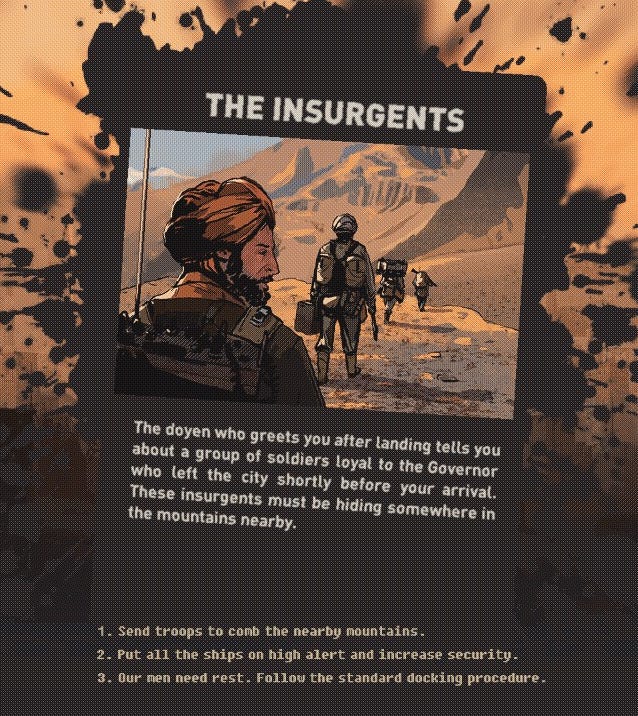
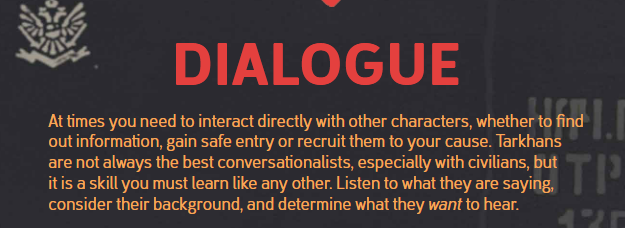



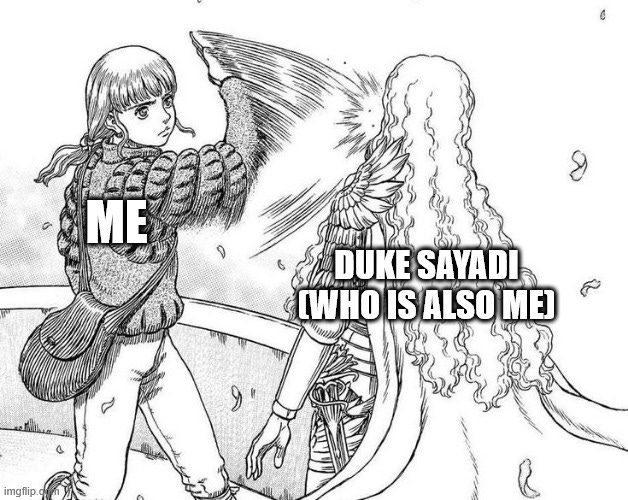
You set a high bar with the first part of this review, and wow, this second one surpassed it. Wow. I'm definitely getting the game now.
Thank you for this. For both parts.
Okay, now I *really* have to reinstall this game. It's both surprising and refreshing to learn that HighFleet reaches for all this recognizable history and iconography toward genuinely thoughtful ends rather than just plain-old aesthetic.
Learned a lot about IRL history from this one, too! Gosh, if I didn't know any better, I'd say the public school system didn't want me hearing too much about modern Afghani history or Balfour's Orientalism. Great work on this one, as always.